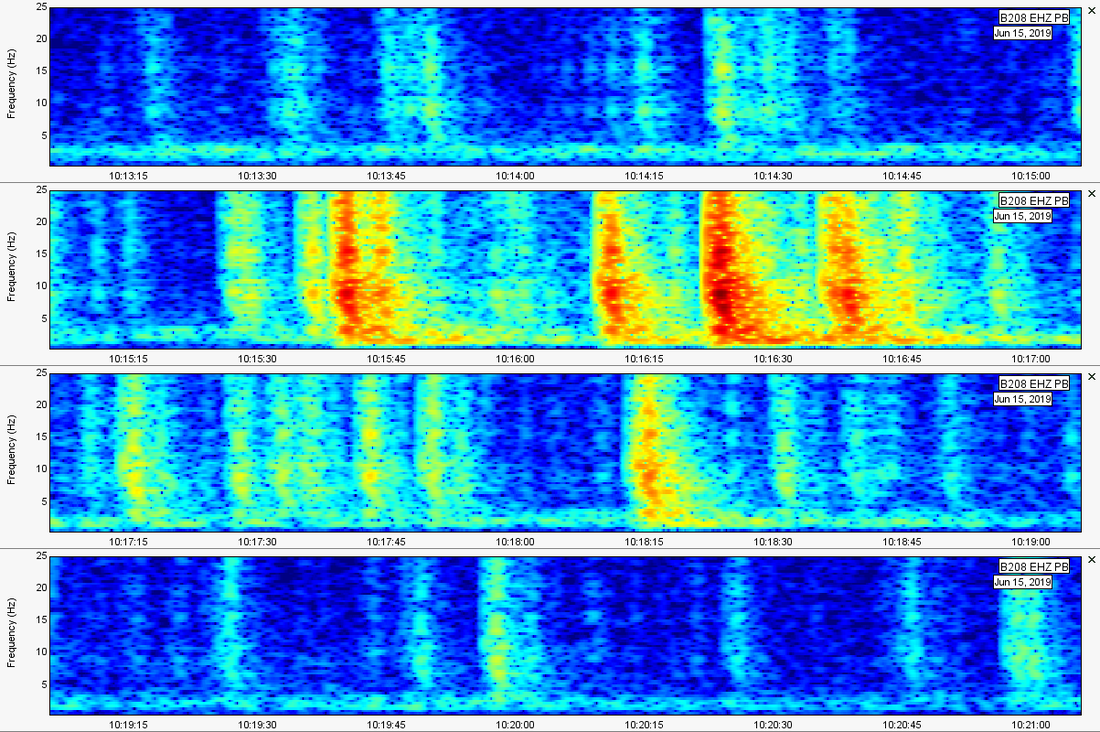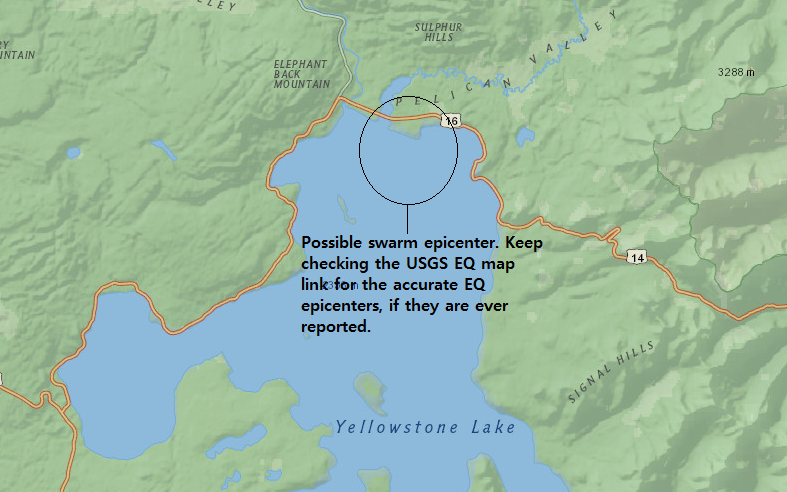|
A very minor rapid-fire swarm struck somewhere under the northern tip of Yellowstone Lake on June 15, 2019. To see this post, please click the title or "read more" to continue... June 15, 2019 swarm Start of swarm: 10:13UTC End of swarm: 10:21UTC (Total of 8 minutes.) Total earthquake count (includes even the tiniest, unreported events): ~30 events of all sizes. Reported count: None yet. Keep checking the USGS EQ map to see if they have reported any. Largest reported earthquake of this swarm: None reported yet. Largest amplitude: ~25,000 (B208-EHZ), ~8,400 (YLA-EHZ) Severity: Very minor If you wish to see which earthquakes in the plots below were reported, simply go to one of the buttons I provided somewhere above that shows you the USGS earthquake map for Yellowstone during this time period. Earthquakes are reported in UTC and the times on the plots are in UTC as well. You can also find the locations of all stations at Yellowstone by looking for one of the two buttons I posted in the beginning of this post. Also, I do not detail every single event of the swarm in the plots below. However, I do try to show most of them. Severity is a personal determination, with the April 11, 2018 swarm acting as a sort of baseline for a major rapid-fire swarm. Severity ranges from minor, to moderate, to major. In rare cases, “extreme” will be used. However, I have not seen a rapid-fire swarm that could ever be labeled as such. But you never know what will happen in the future!
0 Comments
Leave a Reply. |
About
Please click a post title to view the data pertaining to that event! Archives
February 2020
Categories |


 RSS Feed
RSS Feed